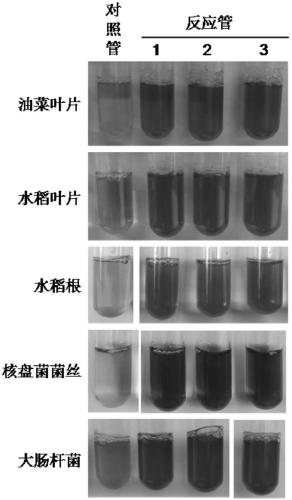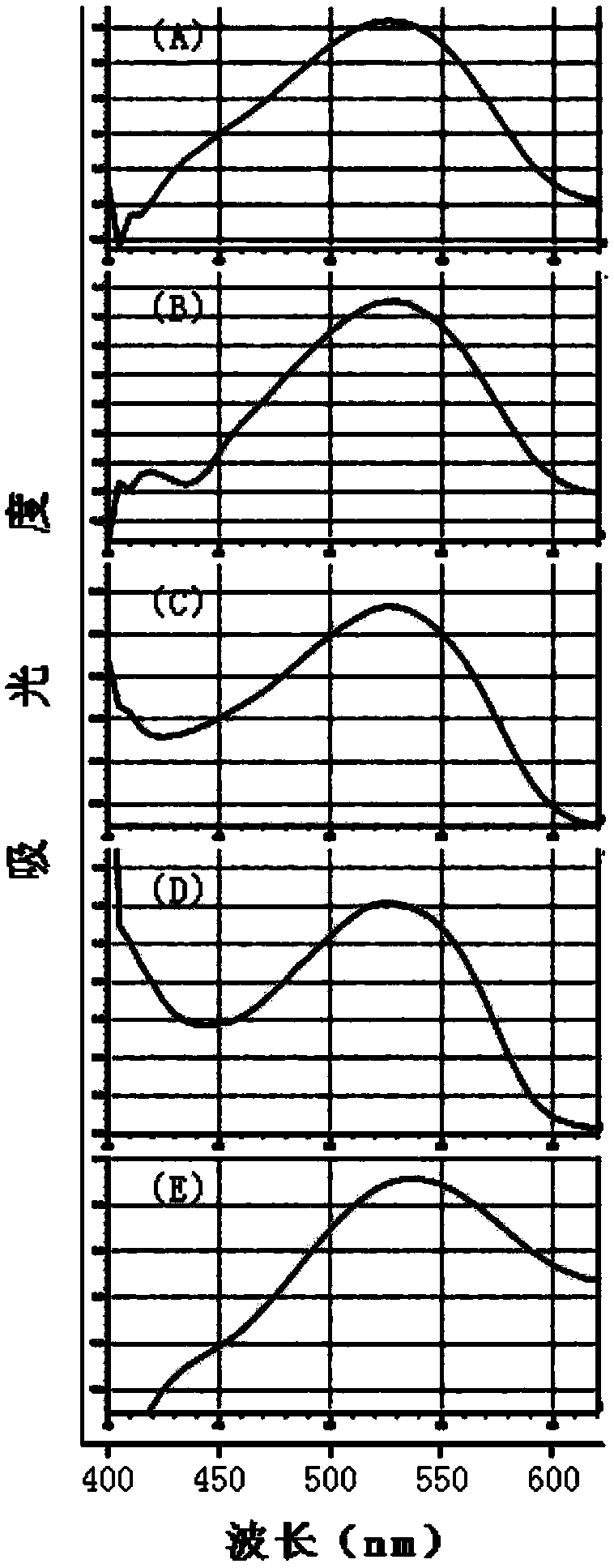A method for measuring the activity of acetolactate synthase by using acetolactate decarboxylase to catalyze decarboxylation and its application
A technology of acetolactate decarboxylase and acetolactate, which is applied in the field of biological enzymology detection, can solve problems such as not seen, and achieve the effect of high efficiency
- Summary
- Abstract
- Description
- Claims
- Application Information
AI Technical Summary
Problems solved by technology
Method used
Image
Examples
Embodiment 1
[0071] Rapeseed rape leaves are used as representatives of higher plant dicotyledonous green tissue materials. Take 3-5g of leaves of rapeseed (the variety is Haoyou 11), add liquid nitrogen and grind it into powder, add enzyme extraction buffer according to the ratio of W / V (leaf fresh weight g: buffer volume ml) = 1:5, and mix well After 20 minutes in ice bath, filter with two layers of gauze, centrifuge the filtrate at 4°C, 12000 rpm for 20 minutes, and obtain the supernatant as crude enzyme solution.
[0072] Then take the crude enzyme solution and measure the activity of acetolactate synthase according to the above-mentioned steps of measuring the enzyme activity. Measure 3 parallel tubes, repeat 3 times, the reaction solution shows red, and the color development of the reaction solution of 3 parallel tubes in one measurement is shown in figure 1 .
[0073] Randomly take a tube of reaction solution and scan the absorbance in the range of 400-620nm. The results show that...
Embodiment 2
[0076] Rice leaves are used as representatives of higher plant monocot green tissue materials. Take 6-10g of rice leaves (the variety is TN1), add liquid nitrogen and grind them into powder, add enzyme extraction buffer according to the ratio of W / V (leaf fresh weight g:buffer volume ml)=1:5, mix well, After cooling in ice for 20 minutes, filter with two layers of gauze, centrifuge the filtrate at 4° C., 12000 rpm for 20 minutes, and obtain the supernatant as crude enzyme solution.
[0077] Then take the crude enzyme solution and measure the activity of acetolactate synthase according to the above-mentioned steps of measuring the enzyme activity. The measurement experiment was repeated 3 times. Measure 3 parallel tubes, repeat 3 times, you can see that the reaction solution is red, and the color of the reaction solution of 3 parallel tubes in one measurement is shown in figure 1 . Randomly take a tube of reaction solution and scan the absorbance in the range of 400-620nm. T...
Embodiment 3
[0080] The root of rice is used as a representative of non-green tissue materials of higher plants. Take the root of rice (the variety is TN1), clean it with distilled water, absorb the surface moisture with absorbent paper, weigh 5-10g of material, add liquid nitrogen and grind it into powder, press W / V (root fresh weight g: buffer volume ml) = 1:5 ratio of enzyme extraction buffer was added, mixed well, ice-bathed for 20 minutes, filtered with two layers of gauze, and the filtrate was centrifuged at 4°C, 12000rpm for 20 minutes, and the obtained supernatant was the crude enzyme solution.
[0081] Then take the crude enzyme solution and measure the activity of acetolactate synthase according to the above-mentioned steps of measuring the enzyme activity. The measurement experiment was repeated 3 times, and the reaction solution showed red color. figure 1 . Randomly take a tube of reaction solution and scan the absorbance in the range of 400-620nm. The results show that the r...
PUM
| Property | Measurement | Unit |
|---|---|---|
| absorbance | aaaaa | aaaaa |
Abstract
Description
Claims
Application Information
 Login to View More
Login to View More - R&D
- Intellectual Property
- Life Sciences
- Materials
- Tech Scout
- Unparalleled Data Quality
- Higher Quality Content
- 60% Fewer Hallucinations
Browse by: Latest US Patents, China's latest patents, Technical Efficacy Thesaurus, Application Domain, Technology Topic, Popular Technical Reports.
© 2025 PatSnap. All rights reserved.Legal|Privacy policy|Modern Slavery Act Transparency Statement|Sitemap|About US| Contact US: help@patsnap.com



